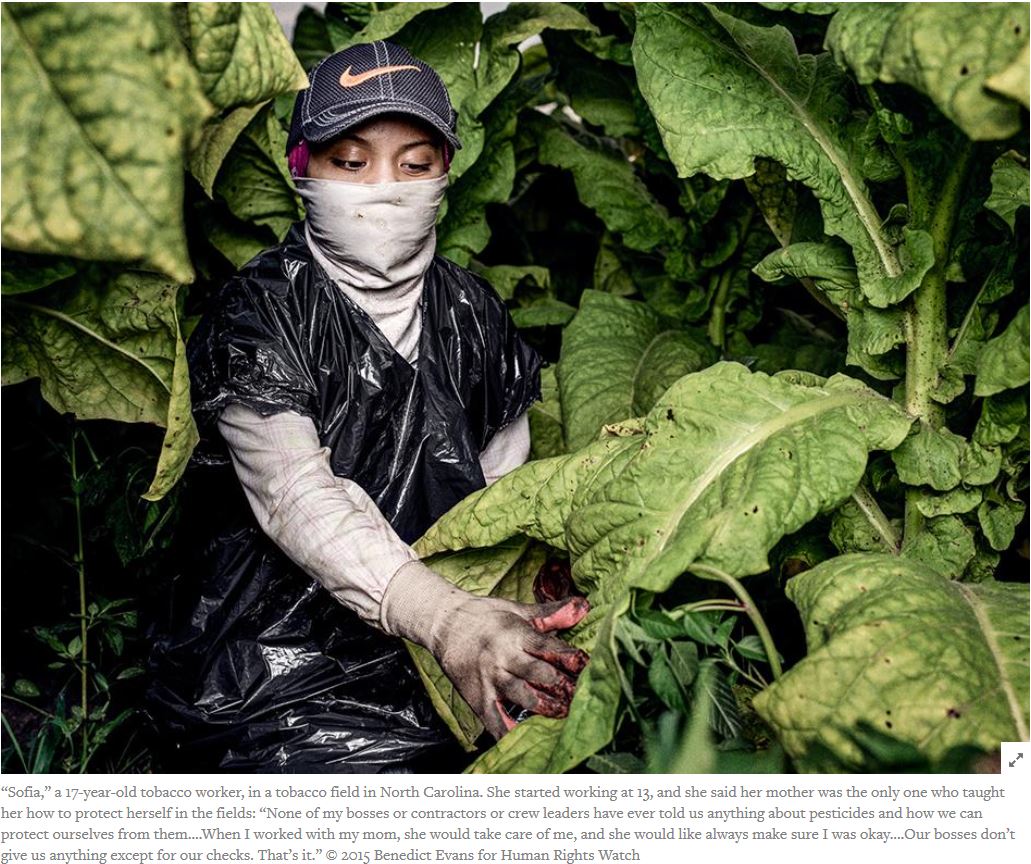More US Child Workers Die in Agriculture Than in Any Other Industry
New US Government Report Highlights Dangers Caused by Weak Child Labor Laws
By Margaret Wurth

Margaret Wurth, Senior Research, Children’s Rights Division, Human Rights Watch
More than half of work-related deaths among children in the US occur in agriculture, according to a new US government report published this week. This happens despite the fact that farms employ less than six percent of child workers, highlighting the devastating consequences of weak laws and regulations that don’t properly protect child farmworkers.
The report was prepared by the US Government Accountability Office (GAO) at the request of congressional representatives Lucille Roybal-Allard from California and Rosa DeLauro from Connecticut.
My colleagues and I have interviewed hundreds of child farmworkers in the US in recent years. They’ve told us harrowing stories of working long hours in extreme heat, using sharp tools and heavy machinery, and climbing to dangerous heights with nothing to protect them from falling. Many are exposed to toxic pesticides, and on tobacco farms, children face the added risk of being exposed to nicotine, a neurotoxin.
Under federal labor law, children at the age of 12 can legally work unlimited hours on farms of any size with parental permission, as long as they don’t miss school. There is no minimum age for children to work on small farms or family farms. By law, children working in agriculture can do jobs at age 16 that health and safety experts deem particularly hazardous. In all other sectors, workers must be 18 to do hazardous work.
The report clearly shows that these gaps in laws designed to protect young workers leave child farmworkers vulnerable to serious injuries and death. The report found that between 2003 and 2016, 237 children died while working in agriculture in the US. That represents more than half of the 452 work-related deaths among children in that period, even though child farmworkers represent only an estimated 5.5 percent of working children. The report estimated more than 4,700 injuries to children working on farms each year, based on data collected in 2012 and 2014.
Many of these children’s injuries and deaths may have been avoided with better workplace protections. But instead of strengthening protections for child workers in the US, the Trump Administration has moved to roll back even the limited regulations that exist to protect child farmworkers from danger.
Since 2001, Representative Roybal-Allard has introduced and reintroduced a bill to afford child farmworkers the same protections as children working in any other sectors, by limiting their working hours and by raising the minimum age for them to begin work. Beginning in January, the Democratic majority in the House of Representatives has an opportunity to act swiftly to address the gaps in US labor law, by affording child farmworkers the same protections as children working in other sectors.
This dispatch may also be viewed on the web site of Human Rights Watch, where it originally appeared on December 4, 2018.



